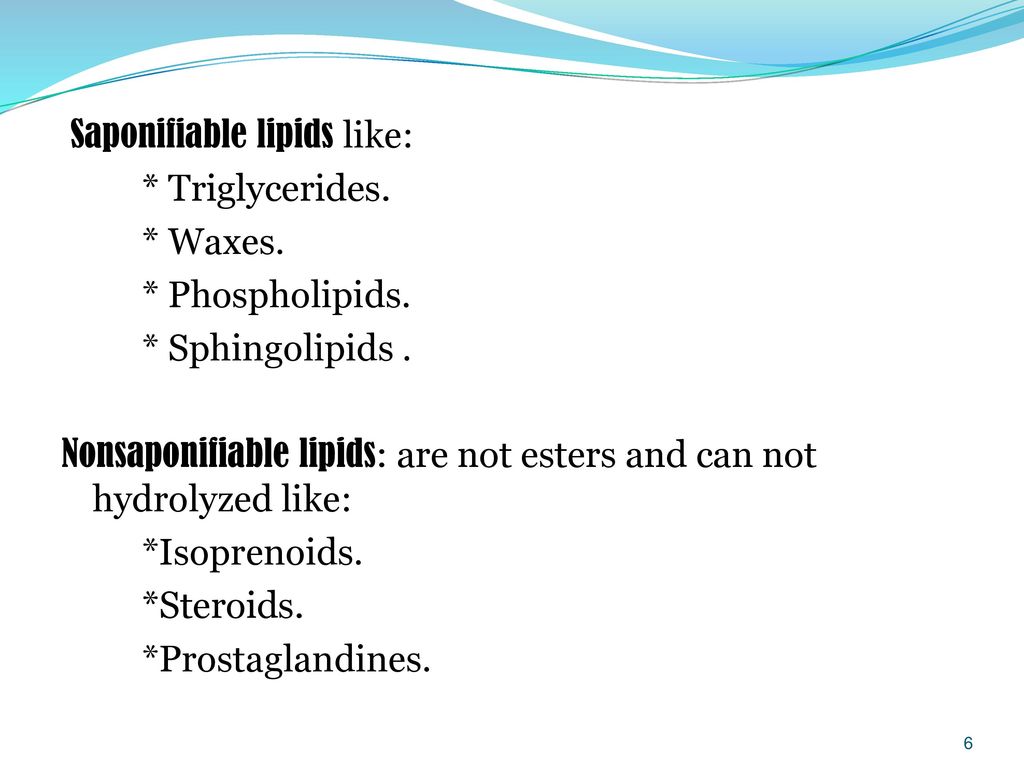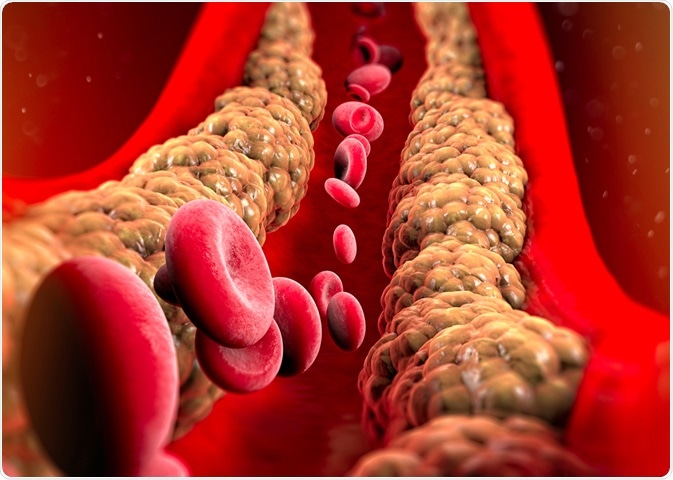Lipids are a diverse group of macromolecules that play crucial roles in various biological functions. They are hydrophobic in nature, primarily composed of hydrocarbon chains, and are insoluble in water but soluble in non-polar solvents. Lipids serve as structural components of cell membranes, provide energy storage, and participate in signaling pathways.
An Introduction to Lipids
The study of lipids dates back to the 18th and 19th centuries when their presence was observed in animal blood and their importance as essential nutrients for humans and animals was recognized. Today, lipids are recognized as one of the major macromolecules in our body, alongside nucleic acids, carbohydrates, and proteins.
What are Lipids?
Lipids are a heterogeneous group of organic molecules that are soluble in non-polar solvents. They can be classified into three categories based on their chemical composition: simple lipids, compound lipids, and derived lipids. Simple lipids include fatty acids, triglycerides, and waxes. Compound lipids include phospholipids, glycolipids, and lipoproteins. Derived lipids are hydrolysis products of simple and compound lipids, such as fatty acids, glycerol, sphingosine, steroids, and lipid-soluble vitamins.
Properties of Lipids
Lipids possess certain physical and chemical properties that distinguish them from other macromolecules. They are insoluble in water and soluble in non-polar solvents like ether, alcohol, chloroform, and benzene. Lipids have no ionic charges and are usually colorless, odorless, and tasteless. Depending on their composition, lipids can be either liquid or non-crystalline solids at room temperature.
Lipid Structure
The structure of lipids is characterized by the presence of hydrocarbon chains, which contribute to their hydrophobic nature. Lipids are composed of two main molecules: glycerol and fatty acids. Glycerol is a three-carbon alcohol with hydroxyl groups attached to each carbon. Fatty acids are long hydrocarbon chains with a carboxyl group at one end. The hydroxyl groups of glycerol are esterified with the carboxyl groups of fatty acids, forming ester bonds.

Classification of Lipids
Lipids can be classified into different categories based on their chemical composition and structure. Nonsaponifiable lipids cannot be hydrolyzed or saponified, while saponifiable lipids can be hydrolyzed or saponified. Simple lipids include fats, oils, and waxes, while compound lipids consist of phospholipids, glycolipids, and lipoproteins. Derived lipids are the hydrolysis products of simple and compound lipids, such as fatty acids, glycerol, sphingosine, steroids, and lipid-soluble vitamins.
Nonsaponifiable Lipids
Nonsaponifiable lipids cannot be hydrolyzed or saponified using alkaline hydrolysis. Examples of nonsaponifiable lipids include cholesterol, which is a steroid, and carotenoids, which are pigments found in plants.
Saponifiable Lipids
Saponifiable lipids can be hydrolyzed or saponified using alkaline hydrolysis. They consist of fatty acids and other components that can be broken down into simpler compounds. The most common saponifiable lipids are triglycerides, which are esters of glycerol and fatty acids.

Types of Lipids
Lipids can be further categorized into different types based on their structure and function. Simple lipids include triglycerides, waxes, and fatty acids. Complex lipids include phospholipids and glycolipids. Precursor and derived lipids include steroids, such as cholesterol, and lipid-soluble vitamins.
Simple Lipids
Simple lipids are composed of fatty acids and a single type of alcohol. Triglycerides are the most common type of simple lipids and serve as energy storage molecules. Waxes are esters formed from long-chain fatty acids and long-chain alcohols. Fatty acids, which are the building blocks of lipids, are carboxylic acids with long hydrocarbon chains.
Complex Lipids
Complex lipids contain additional components, such as phosphoric acid, carbohydrates, or proteins, in addition to fatty acids and alcohols. Phospholipids are essential components of cell membranes and consist of glycerol, fatty acids, phosphate, and an alcohol group. Glycolipids contain a carbohydrate group in addition to glycerol and fatty acids.
Precursor and Derived Lipids
Precursor and derived lipids are hydrolysis products of simple and complex lipids. Steroids, such as cholesterol, are derived lipids that play important roles in cellular structure and function. Lipid-soluble vitamins, such as vitamins A, D, E, and K, are also derived lipids.
Fatty Acids
Fatty acids are a type of lipid that consists of long hydrocarbon chains with a carboxyl group at one end. They can be saturated or unsaturated, depending on the presence of double bonds in the hydrocarbon chain. Saturated fatty acids have no double bonds, while unsaturated fatty acids have one or more double bonds.

Saturated Fatty Acids
Saturated fatty acids have a straight hydrocarbon chain with single bonds between all carbon atoms. They are typically solid at room temperature and are found in animal fats and some vegetable oils. Examples of saturated fatty acids include lauric acid, myristic acid, palmitic acid, and stearic acid.
Unsaturated Fatty Acids
Unsaturated fatty acids contain one or more double bonds in their hydrocarbon chain. They can be either monounsaturated, with one double bond, or polyunsaturated, with multiple double bonds. Unsaturated fatty acids are typically liquid at room temperature and are found in vegetable oils. Examples of unsaturated fatty acids include oleic acid, linoleic acid, and linolenic acid.
Role of Fats
Fats, also known as triglycerides, are esters of glycerol and fatty acids. They serve as a concentrated source of energy in the body, providing more than twice the caloric content of carbohydrates. Fats also play a role in insulation, cushioning vital organs, and serving as a structural component of cell membranes. Additionally, fats are involved in the absorption and transport of fat-soluble vitamins in the body.
How Do Lipids Work?
Lipids play a variety of roles in biological systems. They are important components of cell membranes, providing structure and fluidity. Lipids also serve as energy storage molecules, allowing organisms to store excess energy for later use. In addition, lipids act as signaling molecules, playing a role in cell communication and regulating various physiological processes. Lipids are involved in the synthesis of hormones and serve as precursors for the production of bile acids and vitamin D.
Examples of Lipids
Lipids are found in various forms in living organisms. Some examples of lipids include:
- Waxes: Waxes are esters formed from long-chain fatty acids and long-chain alcohols. They provide waterproofing and protection in plants, insects, and animals.
- Phospholipids: Phospholipids are major components of cell membranes. They consist of glycerol, two fatty acid chains, a phosphate group, and an alcohol group. Phospholipids form a lipid bilayer that defines the boundaries of cells.
- Steroids: Steroids are a class of lipids that contain a four-ring structure. Cholesterol is a well-known steroid and is an important component of cell membranes. Steroids also serve as precursors for the synthesis of hormones, such as estrogen and testosterone.
- Cholesterol: Cholesterol is a lipid that is essential for the structure and function of cell membranes. It is also a precursor for the synthesis of steroid hormones and bile acids.
Alcohols and Esters
Lipids contain alcohols and esters as important components. Glycerol is a three-carbon alcohol that is a building block for the synthesis of triglycerides. Esters are formed when the hydroxyl groups of glycerol react with the carboxyl groups of fatty acids, resulting in the formation of ester bonds.
Triglycerides
Triglycerides, also known as triacylglycerols, are the most common type of lipid found in living organisms. They are composed of glycerol and three fatty acid chains. Triglycerides serve as a major source of energy storage in the body, providing a concentrated form of energy when broken down. They are found in adipose tissue and can be hydrolyzed to release fatty acids for energy production.

Structure of Triglycerides
Triglycerides consist of a glycerol molecule bonded to three fatty acid chains through ester bonds. The fatty acid chains can vary in length and saturation, resulting in different types of triglycerides. The structure of triglycerides allows for efficient storage of energy in a compact form.
Functions of Triglycerides
Triglycerides serve as a major energy reserve in the body, providing a concentrated source of energy when needed. They are stored in adipose tissue and can be broken down to release fatty acids, which can then be used for energy production. Triglycerides also provide insulation and protection for vital organs, as well as serving as a carrier for fat-soluble vitamins in the body.
Glycerol and the Formation of Ester Bonds
Glycerol is a three-carbon alcohol that is an important component of lipids. It serves as a backbone for the formation of triglycerides, phospholipids, and glycolipids. Glycerol molecules are linked to fatty acids through ester bonds, resulting in the formation of various lipid molecules.
Functions of Lipids
Lipids have diverse functions in biological systems. They serve as structural components of cell membranes, providing stability and fluidity. Lipids also act as energy storage molecules, allowing organisms to store excess energy for later use. Additionally, lipids play a role in cell signaling and communication, serving as precursors for the synthesis of hormones and other signaling molecules.
Characteristics of Lipids
Lipids possess several characteristics that differentiate them from other macromolecules. They are hydrophobic in nature, meaning they are insoluble in water. Lipids are also greasy or oily in texture and are often stored in adipose tissue in the body. They have high energy content and are an efficient form of energy storage. Lipids can exist in different physical states, ranging from liquid to non-crystalline solid, depending on their composition.
Difference Between Lipids vs. Proteins
Lipids and proteins are two major macromolecules found in living organisms, each with distinct structures and functions. While lipids are primarily hydrophobic and insoluble in water, proteins are hydrophilic and soluble in water. Lipids serve as energy storage molecules and structural components of cell membranes, while proteins have diverse functions, including enzymatic activity, transport, and structural support.
Fat-Soluble Vitamins
Fat-soluble vitamins are a group of vitamins that are soluble in lipids and require fat for absorption and transport in the body. These vitamins include vitamins A, D, E, and K. Fat-soluble vitamins play important roles in various physiological processes, such as vision, bone health, antioxidant activity, and blood clotting.

Solved Examples on Lipids
Here are a few examples to illustrate the concepts related to lipids:
Example 1: Identify the type of lipid represented by the following structure: [Insert Structure]
Solution: The structure represents a phospholipid. Phospholipids are major components of cell membranes and consist of a glycerol molecule bonded to two fatty acid chains, a phosphate group, and an alcohol group.
Example 2: Explain the difference between saturated and unsaturated fatty acids.
Solution: Saturated fatty acids have no double bonds in their hydrocarbon chains and are typically solid at room temperature. Unsaturated fatty acids have one or more double bonds in their hydrocarbon chains and are usually liquid at room temperature. The presence of double bonds introduces kinks in the hydrocarbon chain, which affects the packing of fatty acid molecules and their physical properties.
Example 3: What is the main function of triglycerides in the body?
Solution: Triglycerides serve as a major energy storage molecule in the body. When the body requires energy, triglycerides are broken down into glycerol and fatty acids, which can then be used for energy production. Triglycerides also provide insulation and protection for vital organs and serve as a carrier for fat-soluble vitamins.
How Kunduz Can Help You Learn Lipids?
Kunduz is a comprehensive online learning platform that provides a wide range of resources to help you learn about lipids and other biological concepts. Through interactive lessons, informative videos, and practice exercises, Kunduz can guide you through the intricacies of lipids, their structure, functions, and classification. With Kunduz, you can gain a deep understanding of lipids and their importance in biological systems.
